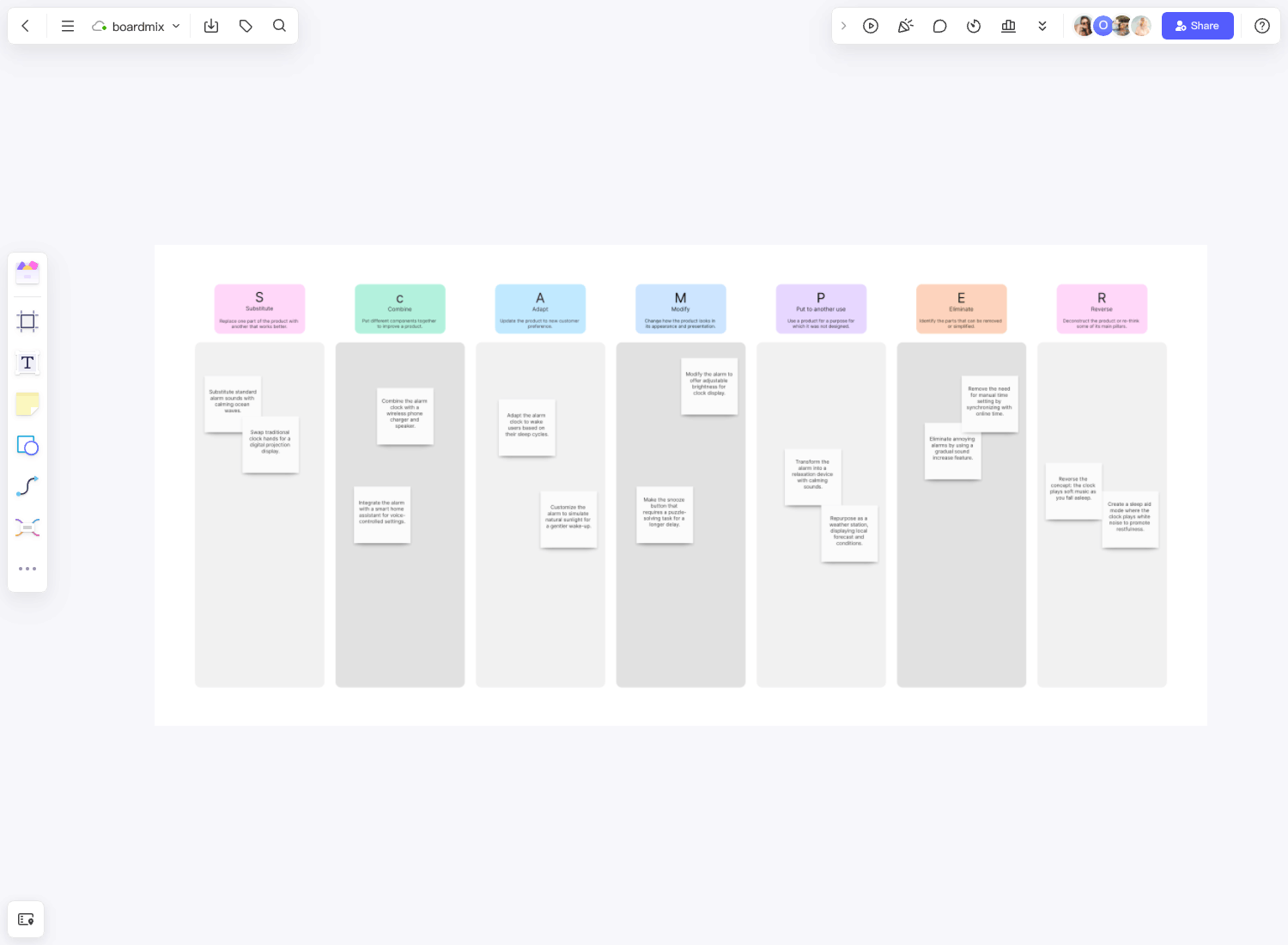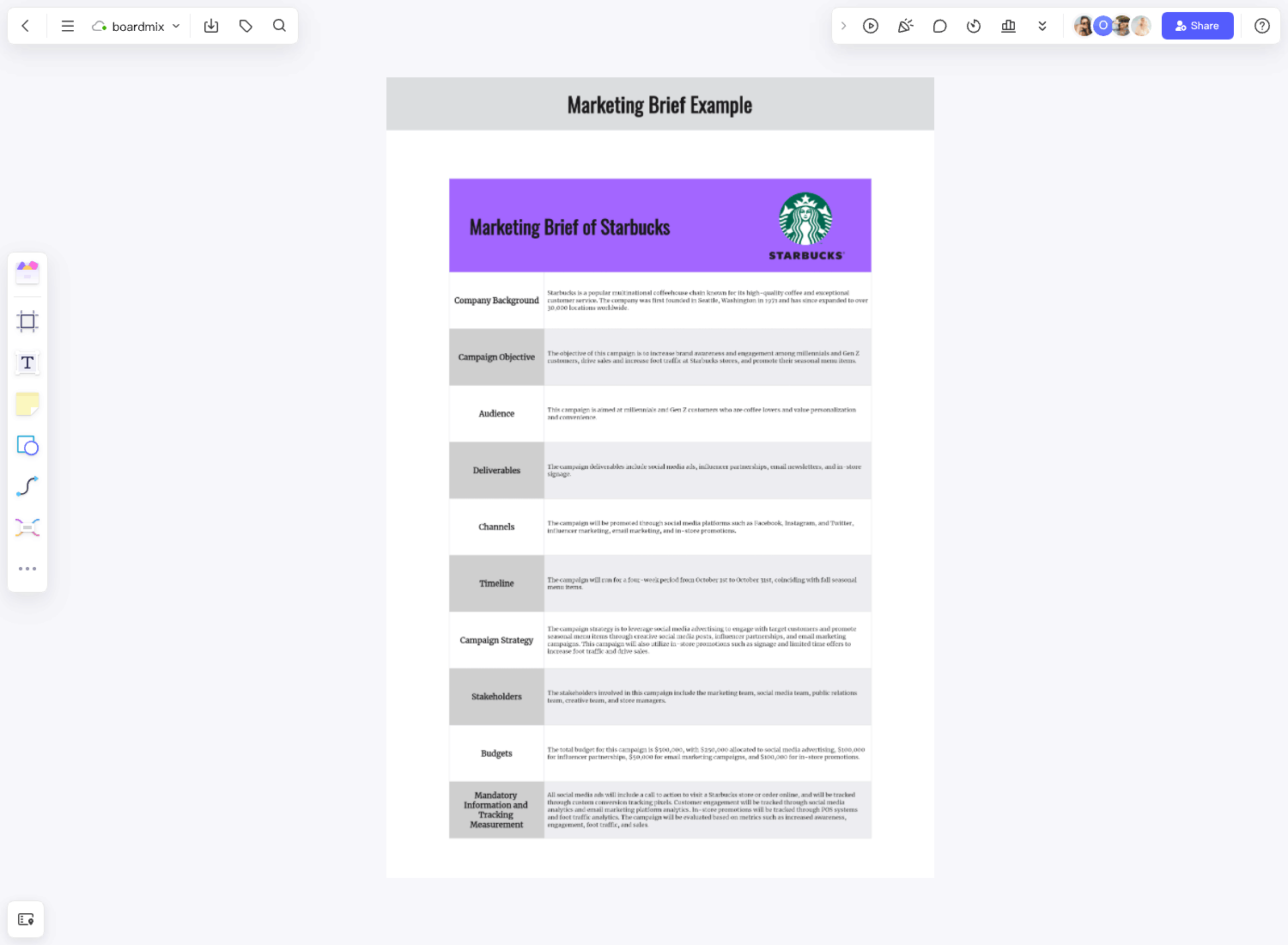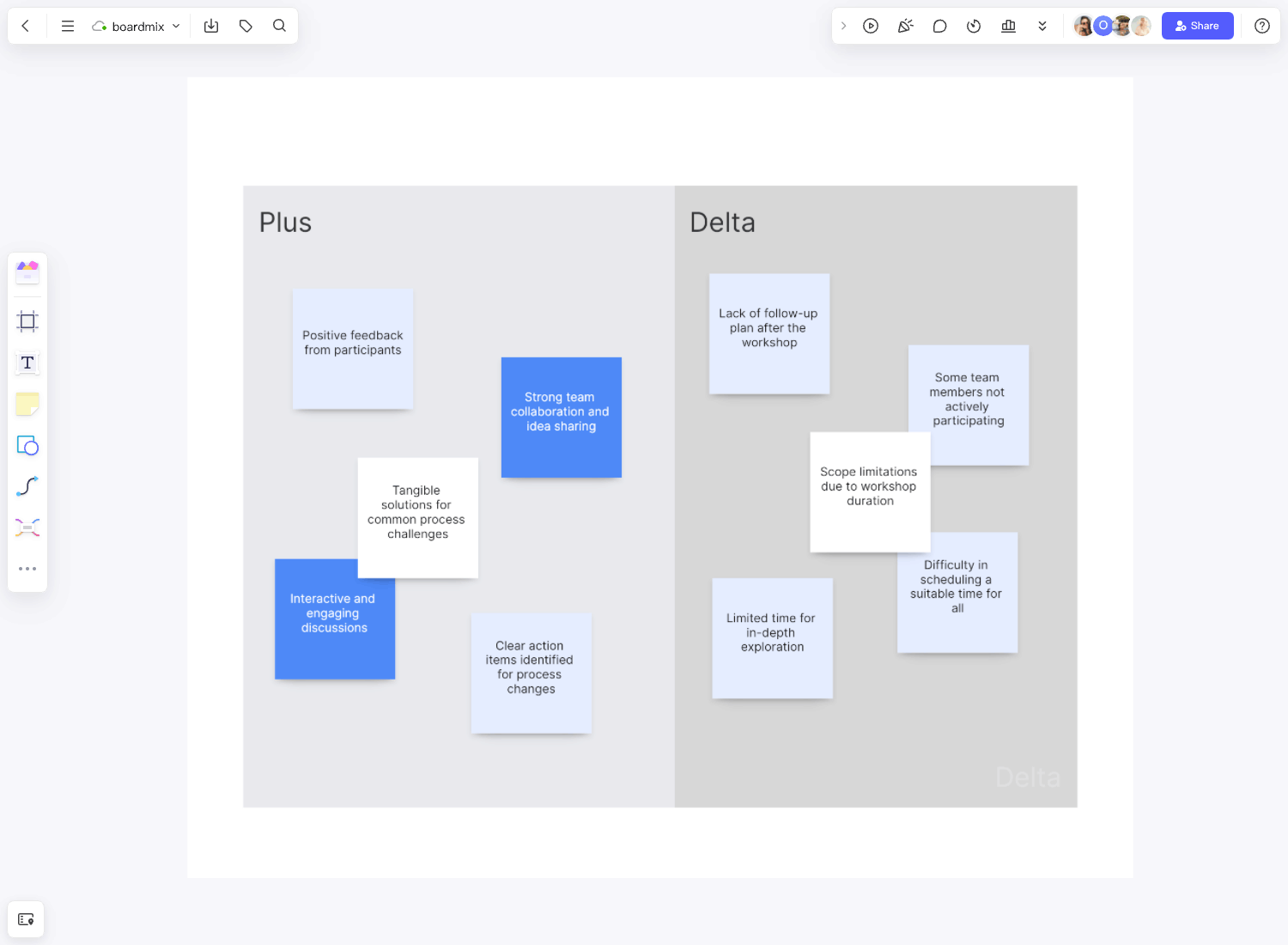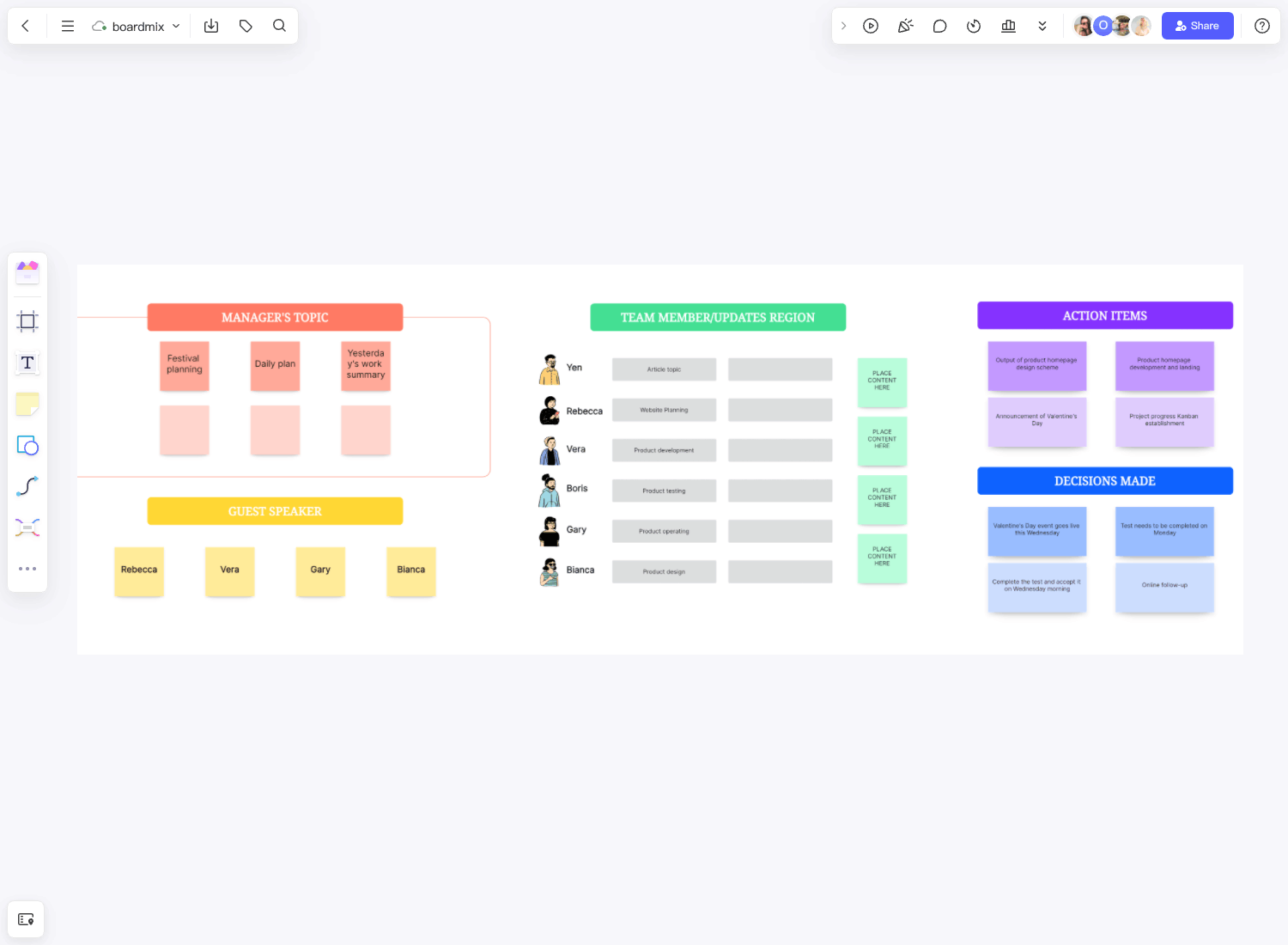Every organization has various brainstorming strategies to flesh out new project ideas. Several of them use SCAMPER, an effective problem-solving and creative thinking technique. As you perform this method, remember to use a SCAMPER template.

Build SCAMPER Template for Free
What is SCAMPER?
The concept of SCAMPER was originally from Bob Erle, an author of creative books for the youth. He introduced the idea in 1971 through his SCAMPER: Games for Imagination Development book.
A SCAMPER diagram is a creative thinking tool that aids in the generation of new ideas or solutions to existing problems. It's an acronym that stands for: Substitute, Combine, Adapt, Modify, Put to another use, Eliminate, and Reverse. Each letter represents a different way to spark creativity and think outside the box.
Substitute involves replacing part of the product or idea with something else. Combine means merging two or more parts of your product or idea to form a new one. Adapt is about modifying your product or idea to suit a different purpose or context. Modify involves changing certain aspects of your product or idea to improve it. Put to another use encourages you to think about how you can use your product or idea differently. Eliminating is about removing unnecessary parts of your product or idea. Lastly, Reverse suggests looking at your product or idea from a different perspective.
This diagram is particularly useful in brainstorming sessions where fresh perspectives are needed. By systematically going through each step of the SCAMPER process, individuals and teams can break free from habitual thinking patterns and unlock innovative solutions.
In terms of constructing a SCAMPER diagram, it's quite straightforward. You start by writing down the problem or idea you're working on, then apply each of the SCAMPER techniques in turn, noting down any new ideas that arise.
How do you write SCAMPER?
When writing SCAMPER, each letter indeed stands for a different strategy to stimulate creative thinking. Here's a little more detail on how you might apply each of these strategies:
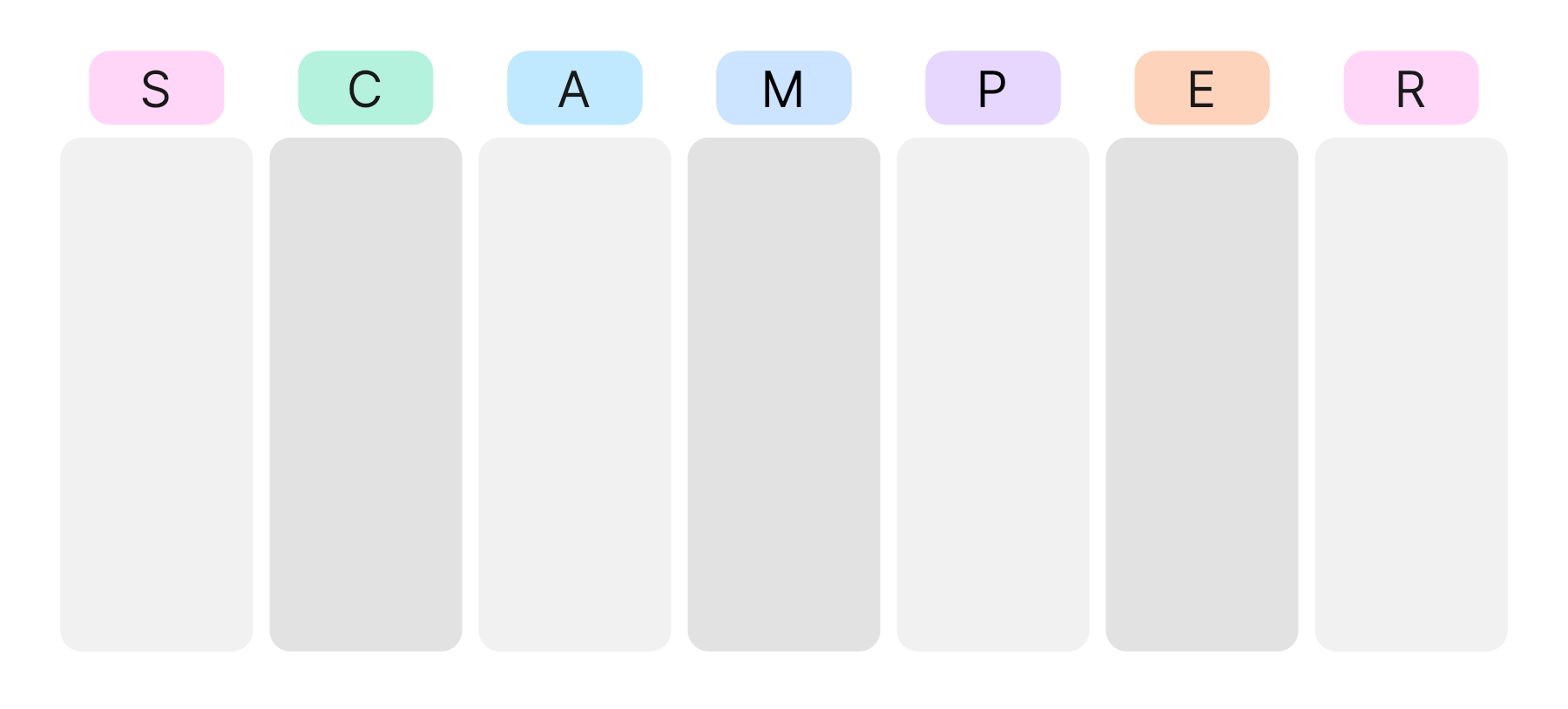
-
Substitute: Think about what parts of the product or idea you can replace with something else. For instance, could you substitute one material for another, or replace a certain feature with a different one?
-
Combine: Consider how you could merge your idea or product with another one. Could two features be combined into one? Or could your product be integrated with another product?
-
Adapt: Reflect on how you could change your idea or product to serve a new purpose or function. Could it be adapted for use in a different industry or context?
-
Modify: Ponder on what elements of your idea or product could be altered to enhance its value. Could you modify its size, shape, color, sound, smell, or other characteristics?
-
Put to another use: Think creatively about other ways your product or idea could be used. Are there unexpected uses that haven't been considered yet?
-
Eliminate: Evaluate what parts of the product or idea are unnecessary and can be removed without reducing its value. Is there anything superfluous that could be eliminated?
-
Reverse/Rearrange: Lastly, try looking at your idea or product from a different perspective. What happens if you reverse the order of steps in a process? Or rearrange the components of your product?
Real Examples of SCAMPER
SCAMPER is a creative thinking technique used to spark innovation and generate new ideas by asking specific questions about existing products or processes.
SCAMPER Example: Smartphone Evolution

Build SCAMPER Template for Free
Let's take a real-world example: the evolution of the smartphone.
1. Substitute:
- Original: Physical keyboards on smartphones (like BlackBerry).
- New: Touchscreen keyboards (as popularized by the iPhone).
- Effect: This substitution allowed for larger screens and a more versatile user interface, making smartphones more user-friendly and capable of supporting a wider range of applications.
2. Combine:
- Original: Separate devices for phone calls, cameras, and music players.
- New: Integrated devices that combine calling, photography, and music capabilities.
- Effect: This combination has led to the development of multifunctional smartphones that can replace several standalone devices, increasing convenience and portability.
3. Adapt:
- Original: Personal digital assistants (PDAs) with limited internet connectivity.
- New: Smartphones with full internet capabilities, adapting features from computers.
- Effect: Adapting computer-like internet capabilities into smartphones enabled users to browse the web, use email, and access a wide range of online services on the go.
4. Modify:
- Original: Smartphones with fixed screen sizes.
- New: Smartphones with flexible and foldable screens.
- Effect: Modifying screen technology to create foldable phones has led to devices that can switch between a compact form and a larger display, offering enhanced versatility and user experience.
5. Put to another use:
- Original: Smartphones primarily for communication.
- New: Smartphones as payment devices using NFC technology.
- Effect: This new use has transformed smartphones into convenient tools for cashless transactions, making them integral to modern financial practices.
6. Eliminate:
- Original: Headphone jacks on smartphones.
- New: Removal of headphone jacks in favor of wireless earbuds.
- Effect: Eliminating the headphone jack has pushed the market towards wireless audio solutions, enhancing convenience and paving the way for advancements in Bluetooth technology.
7. Rearrange:
- Original: Fixed camera positions on the back of the phone.
- New: Pop-up, rotating, or under-display cameras.
- Effect: Rearranging the camera positions has allowed for innovative design solutions that maximize screen real estate, creating a more immersive viewing experience and maintaining camera functionality.
Using the SCAMPER technique, companies have been able to continuously innovate and improve the smartphone, making it an indispensable part of modern life.
SCAMPER Technique in Writing
The SCAMPER technique, initially developed as a tool for product innovation, can also serve as a powerful ally in enhancing the creativity and effectiveness of your writing. Each of its seven strategies can be used to reframe your thinking and explore fresh perspectives. Let's delve into how each strategy applies to writing:
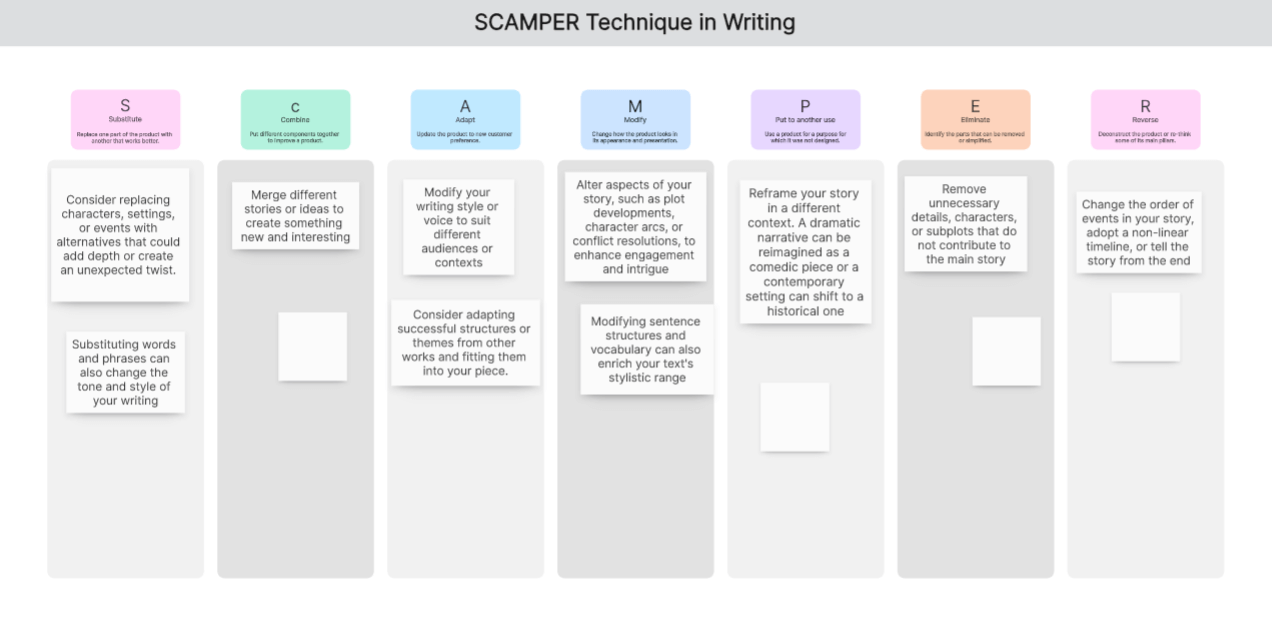
Build SCAMPER Template for Free
1. Substitute
Consider replacing characters, settings, or events with alternatives that could add depth or create an unexpected twist. Substituting words and phrases can also change the tone and style of your writing.
2. Combine
Merge different stories or ideas to create something new and interesting. You can also combine different writing styles, genres, or perspectives to generate innovative narratives.
3. Adapt
Modify your writing style or voice to suit different audiences or contexts. Consider adapting successful structures or themes from other works and fitting them into your piece.
4. Modify
Alter aspects of your story, such as plot developments, character arcs, or conflict resolutions, to enhance engagement and intrigue. Modifying sentence structures and vocabulary can also enrich your text's stylistic range.
Put to Another Use
Reframe your story in a different context. A dramatic narrative can be reimagined as a comedic piece or a contemporary setting can shift to a historical one.
5. Eliminate
Remove unnecessary details, characters, or subplots that do not contribute to the main story. In the realm of language usage, eliminate redundancies and overly complex structures to enhance clarity.
6. Reverse/Rearrange
Change the order of events in your story, adopt a non-linear timeline, or tell the story from the end. Rearranging paragraphs and sentences can also improve the flow and coherence of your writing.
The SCAMPER technique is a dynamic approach to developing more creative and compelling content. Challenging conventional thinking and exploring diverse possibilities, it stimulates originality and inventiveness in your writing. So why not give it a try? The next time you're faced with writer's block or feel stuck in a creativity rut, remember SCAMPER and unleash your inner writer's full potential!
Benefits of the SCAMPER template in Boardmix
The best way to maximize this framework is using a digital SCAMPER template. With Boardmix, you can explore different templates according to your company's requirements. Here are the primary reasons why creating the SCAMPER template with Boardmix is better.
- You can play with various designs. The method is flexible enough to use mind mapping, include your seven main categories, and create subcategories using arrows and smaller boxes. A SCAMPER template can even be in columns, so you can utilize lines to separate the seven questions and create subtopics under each column.
- An online template lets you use colors, and insert images and stickers. Your options in creating a SCAMPER template online are almost limitless. Colors are excellent indicators to categorize each question. You can visualize your chart through photos, shapes, or stickers if it needs examples.
- There's better collaboration using a SCAMPER template with Boardmix. You can share the link to your template with everyone, let them view the diagram, and authorize team leaders to edit it. You need not meet personally, as anyone from anywhere can access the template.
How to use the SCAMPER technique?
- Gather everyone and notify members about the problem you are trying to solve. It is also best to set precise goals before scampering.
- Work on each letter of the SCAMPER template. The breakdown of the technique and some questions to help you out are as follows:
- Substitute. What can the company change or substitute? Is it your product, the process, or the service? What other tools or products could I use?
- Combine. During this stage, consider how you can combine segments within the process. An example question is, 'How can you combine resources and talent to develop a new approach to a product?'
- Adapt. Look into the elements of your processes, products, or services that you can update or adjust to improve. 'In what context can I place my existing product' could be an ideal question.
- Modify. How can we modify the product's shape, appearance, or vibe? What elements must I add to modify my service or product?
- Put to another use. What other markets could benefit from my service?
- Eliminate. What features must I remove to simplify my process?
- Rearrange. What aspects of process, service, or product could I rearrange?
- Gather all the insights from everyone, narrow them down if necessary, and finalize your template. Review and refine the framework before sharing it with team leaders for approval.
When to use the SCAMPER technique?
SCAMPER template is used if you have to get new ideas for campaigns or projects. It can't be avoided that sometimes, team members become stagnant and outdated when giving out insights during brainstorming. The method is easy to use and understand, so everyone can quickly get the hang of it.
In most organizations, the SCAMPER strategy is one of the most straightforward brainstorming methods. The simple technique comes from the idea that something new is based on something already existing. There are no wrong inputs when using the SCAMPER template; all ideas are welcome.
FAQ about SCAMPER
What is the purpose of SCAMPER?
The SCAMPER strategy is primarily used to help organizations explore new insights using seven various perspectives. You can use the structure to ignite the team's potential and boost intelligent decision-making processes.



